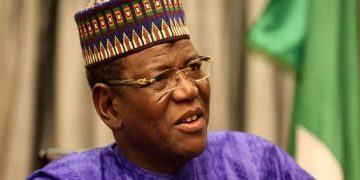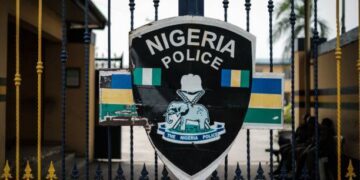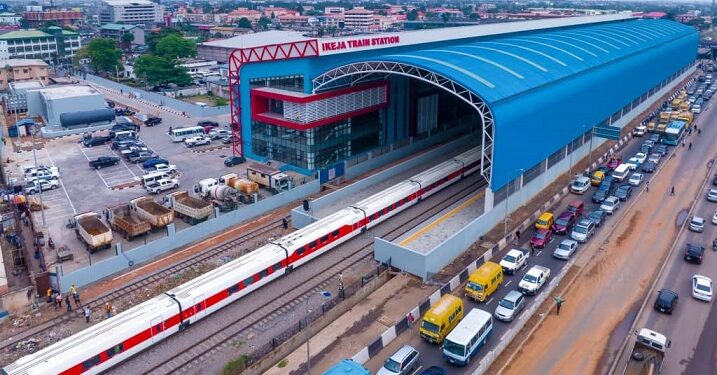What do you know about Lagos Red Rail Line, as first phase takes off?
The historic Lagos Red Rail Line kick-started on Thursday after its inauguration by President Bola Ahmed Tinubu.
Two hundred and fifty thousand passengers can be transported aboard coaches on the Rail Line through the route from Oyingbo to Agbado.
A trip which usually takes two or three hours on the road will be one hour less.
READ ALSO: Lagos demands reduction in noise pollution from worship places
The Babajide Sanwo-Olu administration which started the project mid-2021 said it would extend the route to Abeokuta in collaboration with the Ogun State Government.
The contract papers for the second phase, which will take off from Oyingbo to link the Blue Line, which started operation last year in Marina, were signed at the Thursday event.
An elated President Tinubu, who initiated the idea when he was governor of Lagos State, more than 20 years ago, urged other governors to emulate Sanwo-Olu by easing transportation challenges in their states.
The President said: “I am pleased to declare to you that the momentum of greatness we kick-started a quarter of a century ago has become an unstoppable entity.
READ ALSO: Immigration arrest American with firearms at Lagos Airport
“It is not a crime to dream and dream big. Just stay focused and stay on course, particularly if your central focus is the people.”
The President lauded the Lagos State Transport Management Agency (LAMATA) for demonstrating that good causes can succeed if pushed for with determination.
Tinubu, who said he would be looking out for the completion of the second phases of the Blue and the Red Rail Lines, added that the provision of an alternative transportation system would open the state’s economic potential more.
“All I see are job opportunities for our people,” the president added.
Governor Sanwo-Olu described the project as “a culmination of a long and painstaking journey of reforming the transportation sector in Lagos State.’’
READ ALSO: Witnesses say terrorists abducted passengers, shot others in Abuja-Kaduna train attack
He said: “I am proud to say that Lagos State has a Strategic Transport Master Plan (STMP) that outlines what that integrated rail system should look like six rail lines, one monorail, 14 BRT corridors, over 20 water routes, and a vast network of major and inner roads.
Chinese Ambassador to Nigeria, Cui Jianchun, said China remained a committed partner of Nigeria in the task of making government work for the people.
Jianchun, who lauded Tinubu for his commitment to alleviating the sufferings of Nigerians, promised that China would be willing to further assist Nigeria in the areas of technology and infrastructural development.
The Ambassador thanked Sanwo-Olu for reposing confidence in the Chinese corporation handling the project, adding that everything possible would be done to ensure the completion within the proposed time.
READ ALSO: Terrorists bomb Abuja-Kaduna train, 970 passengers stranded
Highpoint of the inauguration was the signing of the second phase of the project, by LAMATA Managing Director Abimbola Akinajo and CCECC Worldwide Chairman, Liu Weimin.
Overview of Lagos Red Rail Line
The Lagos Red Rail Line is a part of the Lagos Rail Mass Transit (LRMT) system, which is a rapid transit system serving the city of Lagos, Nigeria. The Red Line is the first of the LRMT lines to be constructed and was inittially expected to commence operationa in 2022.
Route
The Red Line will run from Agbado, a suburb in the Ogun State, to Marina, a major business district in Lagos Island. The line will have a total length of 37 kilometers (23 miles) and will pass through several major neighborhoods in Lagos, including Ikeja, Yaba, Surulere, and Ebute Metta. The Red Line will have a total of 13 stations, with an estimated daily ridership of 500,000 passengers.
Construction
The construction of the Lagos Red Rail Line began in 2010 and is being carried out by the China Civil Engineering Construction Corporation (CCECC) in collaboration with the Lagos State Government. The project is estimated to cost $1.2 billion and is being funded by a combination of federal and state government funds as well as loans from the Chinese government.
Benefits
The Lagos Red Rail Line is expected to provide several benefits to the residents of Lagos, including reducing traffic congestion, shortening travel times, and improving air quality. The line will also create jobs and stimulate economic development in the areas it passes through.
Challenges
The construction of the Lagos Red Rail Line has faced several challenges, including funding delays, land acquisition issues, and disputes over routes. However, the Lagos State Government has expressed its commitment to completing the second phase of the project despite these challenges.





























